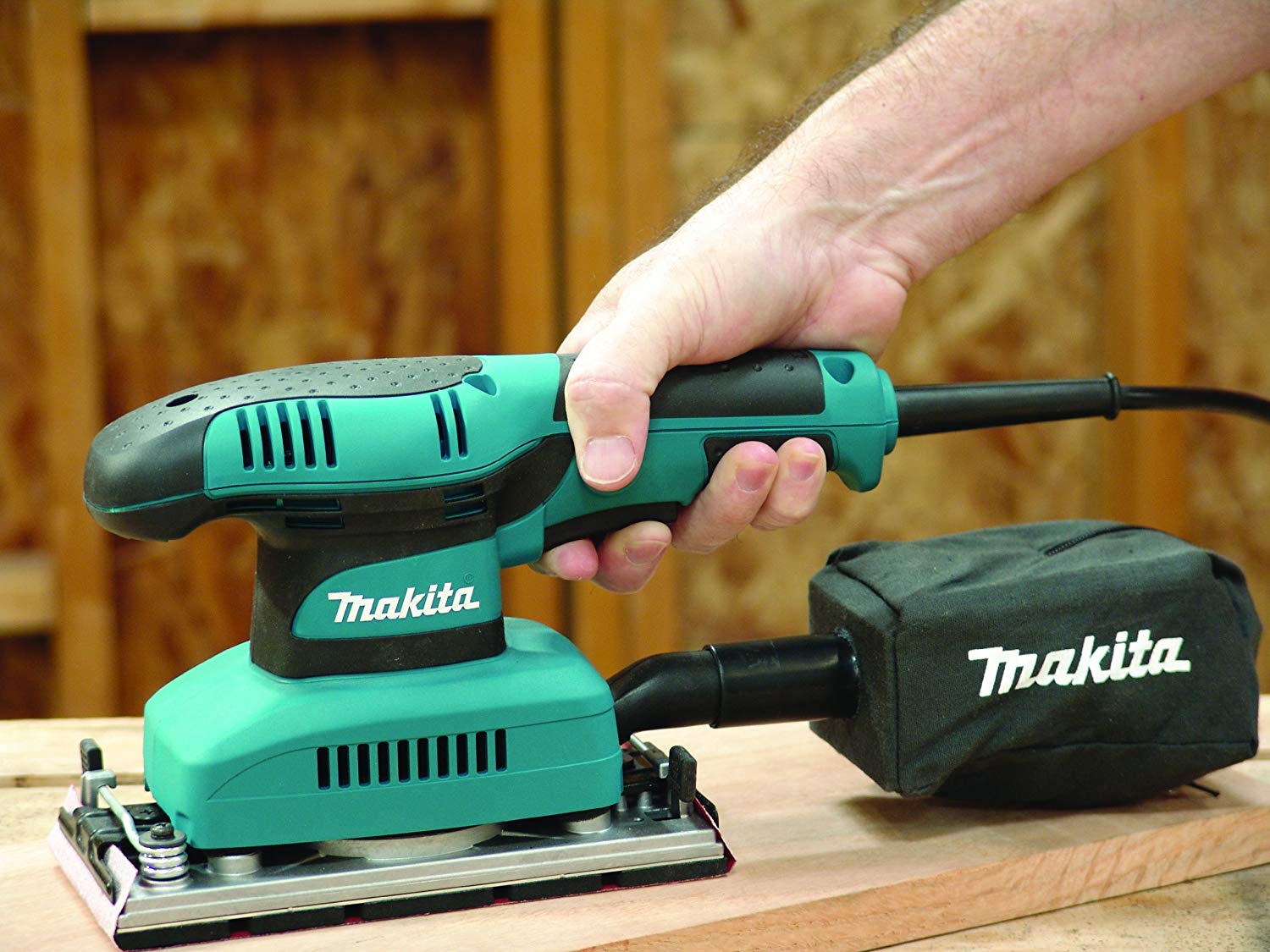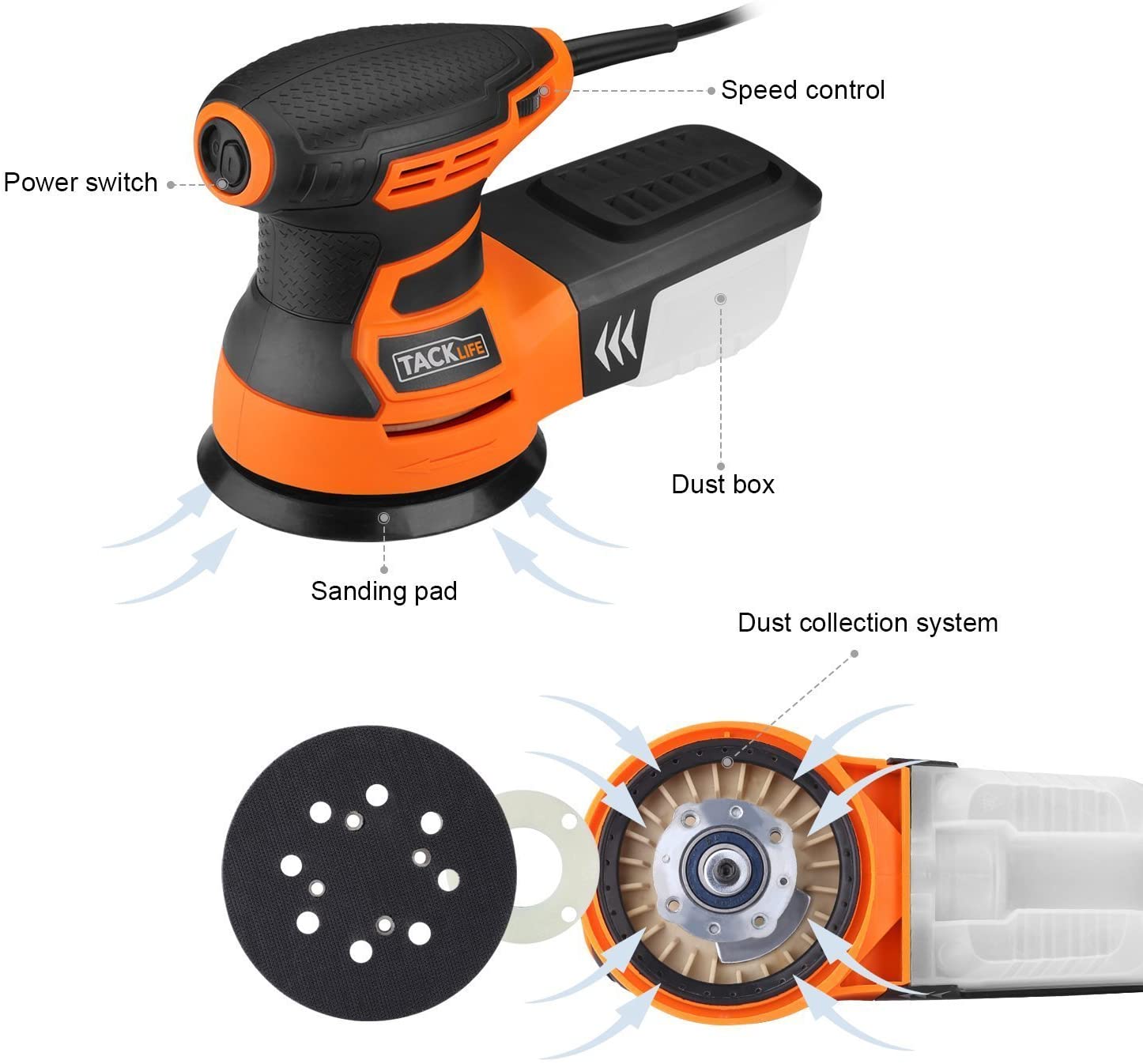Types of Sanders for Kitchen Cabinets: Best Sander For Kitchen Cabinets

Selecting the appropriate sander for refinishing kitchen cabinets is crucial for achieving a smooth, professional finish. The choice depends on the size of the cabinets, the level of detail required, and the desired speed of the project. Several sander types offer distinct advantages and disadvantages, making it essential to understand their capabilities before beginning the task.
Comparison of Sander Types for Cabinet Refinishing
The four primary sander types suitable for kitchen cabinet refinishing are sheet sanders, palm sanders, detail sanders, and random orbital sanders. Each possesses unique characteristics impacting its effectiveness and suitability for this specific application. The following table provides a concise comparison:
| Sander Type | Speed | Power | Application |
|---|---|---|---|
| Sheet Sander | Moderate to High | Moderate to High | Large, flat surfaces; initial sanding |
| Palm Sander | Moderate | Moderate | Smaller areas, contoured surfaces; intermediate sanding |
| Detail Sander | Low | Low | Intricate details, edges, corners; final sanding |
| Random Orbital Sander | Moderate to High | Moderate to High | Versatile; all stages, especially intermediate and final sanding |
Pros and Cons of Each Sander Type
Best sander for kitchen cabinets – Each sander type presents distinct advantages and disadvantages in the context of cabinet refinishing:
Sheet Sander
Pros: Efficient for sanding large, flat areas; relatively fast sanding process; good for initial sanding to remove old finish.
Cons: Difficult to maneuver in tight spaces or around curves; potential for creating scratches or gouges if not used carefully; not ideal for detailed work.
Palm Sander
Pros: More maneuverable than sheet sanders; suitable for sanding smaller areas and contoured surfaces; relatively easy to control.
Cons: Slower than sheet sanders; may leave swirl marks if not used properly; less effective on large flat surfaces.
Detail Sander
Pros: Excellent for sanding intricate details, edges, and corners; minimizes the risk of damage to delicate areas; allows for precise control.
Cons: Slow sanding process; not suitable for large surfaces; limited power.
Random Orbital Sander
Pros: Versatile; suitable for all sanding stages; relatively easy to use; minimizes swirl marks; efficient for both large and small areas.
Cons: Can be more expensive than other sander types; requires careful control to avoid damage to delicate areas.
Grit Selection Guide for Cabinet Sanding
Appropriate grit selection is critical for achieving a smooth, even finish. The sanding process typically involves three stages: initial sanding, intermediate sanding, and final sanding. Each stage requires a different grit level:
Initial Sanding: Use a coarser grit (e.g., 80-100 grit) to remove old finish and level the surface. This stage is best performed with a sheet sander or random orbital sander for efficiency.
Intermediate Sanding: Switch to a medium grit (e.g., 120-150 grit) to smooth out any imperfections left from the initial sanding. A random orbital sander or palm sander is well-suited for this stage.
Final Sanding: Use a fine grit (e.g., 220-320 grit) to create a perfectly smooth surface ready for finishing. A detail sander or random orbital sander is ideal for this stage, particularly for achieving a smooth finish in corners and edges.
Factors to Consider When Choosing a Sander

Selecting the optimal sander for kitchen cabinet refinishing requires careful consideration of several key factors. The right tool will significantly impact the efficiency and quality of your work, ultimately determining the final appearance of your cabinets. A well-informed choice ensures a smoother, more professional finish and minimizes frustration.
Several critical aspects influence the performance and usability of a sander, impacting both the project’s outcome and the user’s experience. These range from the sander’s power and dust collection capabilities to its ergonomic design and the manufacturer’s warranty. Understanding these factors is crucial for making an informed purchasing decision.
Key Features of a High-Quality Cabinet Sander
The following features are paramount when evaluating sanders for kitchen cabinet projects. Prioritizing these aspects will lead to a more efficient and satisfying refinishing experience.
- Power and Speed: Sufficient power is essential for efficient sanding, especially on harder wood surfaces. Variable speed settings allow for greater control, enabling adaptation to different materials and sanding stages. A higher wattage generally indicates greater power, but consider the weight and ergonomics of the tool in relation to its power.
- Dust Collection System: Effective dust collection is crucial for both health and a clean work environment. A robust system minimizes airborne dust, protecting the user’s respiratory system and preventing dust from settling on already-sanded surfaces. Different systems, discussed below, offer varying degrees of effectiveness.
- Ergonomics and Comfort: Prolonged use necessitates a comfortable and well-balanced sander. Features like a soft-grip handle, lightweight design, and reduced vibration contribute to user comfort and reduce fatigue, particularly during extensive projects.
- Warranty and Customer Support: A comprehensive warranty demonstrates the manufacturer’s confidence in their product’s durability. A reputable warranty, coupled with readily available customer support, provides peace of mind and ensures recourse should any issues arise.
Reputable Sander Brands, Best sander for kitchen cabinets
Several manufacturers consistently produce high-quality, durable sanders known for their performance and reliability. These brands often incorporate advanced features and are backed by strong warranties.
- Bosch: Bosch is a well-established brand offering a wide range of sanders known for their robust construction, powerful motors, and effective dust collection systems. Their sanders are often praised for their balance and ease of use, making them suitable for both professionals and DIY enthusiasts. Many models feature micro-filtration systems for improved dust control.
- Makita: Makita sanders are frequently lauded for their durability and power. Their tools are often preferred by professionals for their ability to withstand heavy use. Makita offers a variety of sanders, including random orbital sanders and detail sanders, each designed for specific tasks and applications. Their focus on engineering and quality control is evident in the longevity of their products.
- DeWalt: DeWalt is another reputable brand known for producing powerful and reliable sanders. They often incorporate innovative features, such as improved dust sealing and ergonomic designs, to enhance user experience and performance. Their sanders are frequently chosen for their ability to handle demanding projects with minimal effort. Many DeWalt models boast high-performance motors and durable components.
Dust Collection Methods
Effective dust collection is paramount for maintaining a clean work environment and protecting your health. Different methods offer varying levels of dust containment.
- Dust Bag: Many sanders incorporate a built-in dust bag. [Description of image: A depiction of a sander with a clear plastic dust bag visibly attached to the sander’s rear. The bag is partially full, showing a fine layer of sawdust inside.] This method provides basic dust collection, but its effectiveness can be limited, particularly with fine dust particles that may escape the bag’s filtration. Regular emptying is necessary to maintain efficiency.
- Vacuum Attachment: Sanders with vacuum attachments offer significantly improved dust collection. [Description of image: A sander with a hose attached to its rear, connected to a shop vacuum. The hose is clearly marked for connection to the sander. The shop vacuum is depicted in the background, illustrating the complete system.] The vacuum’s powerful suction removes most dust particles directly from the sanding area, minimizing airborne dust and improving overall cleanliness. This method is generally preferred for its superior dust containment.
Refinishing Kitchen Cabinets

Transforming outdated kitchen cabinets can dramatically enhance the look and feel of your entire kitchen. Refinishing, rather than replacing, offers a cost-effective and environmentally friendly solution, breathing new life into your space with minimal disruption. This guide provides a detailed, step-by-step approach to achieving professional-looking results.
Preparation: Stripping and Cleaning
Thorough preparation is crucial for a successful refinishing project. This involves removing the existing finish and meticulously cleaning the cabinet surfaces. A poorly prepared surface will lead to an uneven and ultimately unsatisfactory final result.
- Remove Hardware: Carefully unscrew and remove all cabinet knobs, handles, and hinges. Label each piece to ensure correct reinstallation later. Store them safely to prevent loss or damage.
- Strip the Old Finish: Depending on the existing finish (paint, varnish, lacquer), you may need chemical strippers, sanding, or a combination of both. Always follow the manufacturer’s instructions for safety and effectiveness. Wear appropriate protective gear, including gloves, eye protection, and a respirator.
- Clean Thoroughly: After stripping, use a suitable cleaner (often a degreaser) to remove any residue from the stripper and ensure a clean surface for the new finish. Allow the cabinets to dry completely before proceeding.
Remember to work in a well-ventilated area when using chemical strippers, and always dispose of waste materials responsibly.
Surface Preparation: Sanding and Smoothing
Once clean and dry, the cabinet surfaces require careful sanding to create a smooth, even base for the new finish. This step is critical for achieving a professional-looking result. Improper sanding will lead to imperfections in the final finish.
- Start with Coarse Grit: Begin with a coarser grit sandpaper (around 80-100 grit) to remove any remaining imperfections or unevenness from the stripping process. Sand in the direction of the wood grain to avoid scratches.
- Progress to Fine Grit: Gradually move to finer grits (120-180 grit, then 220 grit) to smooth the surface further. Regularly inspect your work and ensure you’re removing any remaining residue or imperfections.
- Clean Again: After sanding, thoroughly clean the cabinet surfaces with a tack cloth or a slightly damp cloth to remove all sanding dust. This prevents dust from interfering with the adhesion of the new finish.
Avoid excessive sanding, as this can damage the wood. Use even pressure and work in small sections to prevent overheating the wood.
Applying the New Finish
With the cabinets properly prepared, it’s time to apply the new finish. Whether you choose paint or stain, meticulous application is key to a flawless result.
- Prime (if necessary): If using paint, apply a high-quality primer to ensure proper adhesion and prevent bleed-through from the underlying wood. Allow the primer to dry completely according to the manufacturer’s instructions.
- Apply the Finish: Apply the paint or stain in thin, even coats, following the manufacturer’s recommendations for drying time between coats. Multiple thin coats are preferable to one thick coat to avoid drips and runs. Use a high-quality brush, roller, or sprayer for a smooth finish.
- Sand Between Coats (if necessary): Lightly sand between coats with very fine-grit sandpaper (320 grit or higher) to smooth any imperfections before applying the next coat. Always remove all sanding dust before proceeding.
For a professional-looking finish, consider using a high-quality sprayer for even application. Practice on scrap wood before applying the finish to your cabinets.
Final Touches: Hardware and Protection
Once the final coat of finish is dry and cured, it’s time to add the finishing touches.
- Reinstall Hardware: Carefully reinstall all cabinet knobs, handles, and hinges, ensuring they are securely fastened.
- Protect the Finish: Consider applying a protective topcoat, such as a clear varnish or polyurethane, to enhance durability and protect the new finish from scratches and wear. Follow the manufacturer’s instructions for application and drying time.
Regular cleaning and maintenance will help preserve the beauty and longevity of your refinished cabinets.
